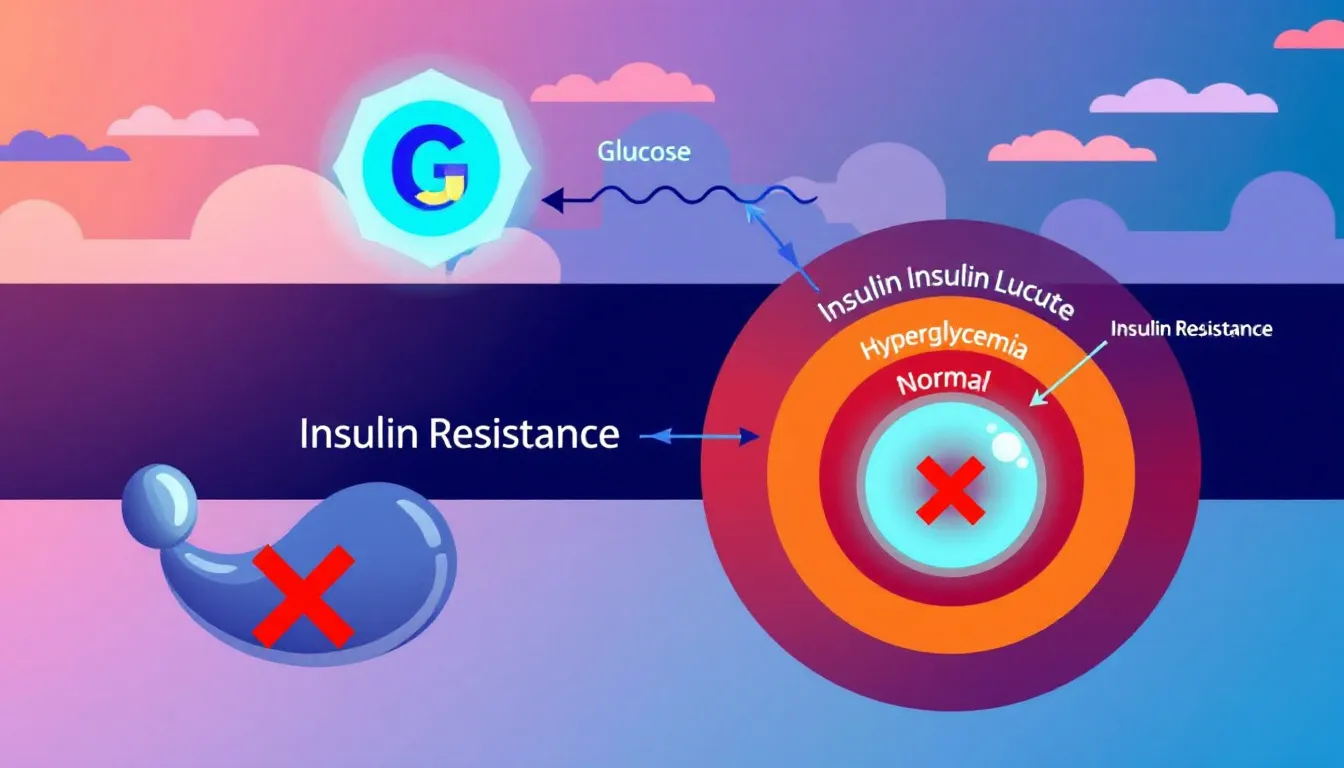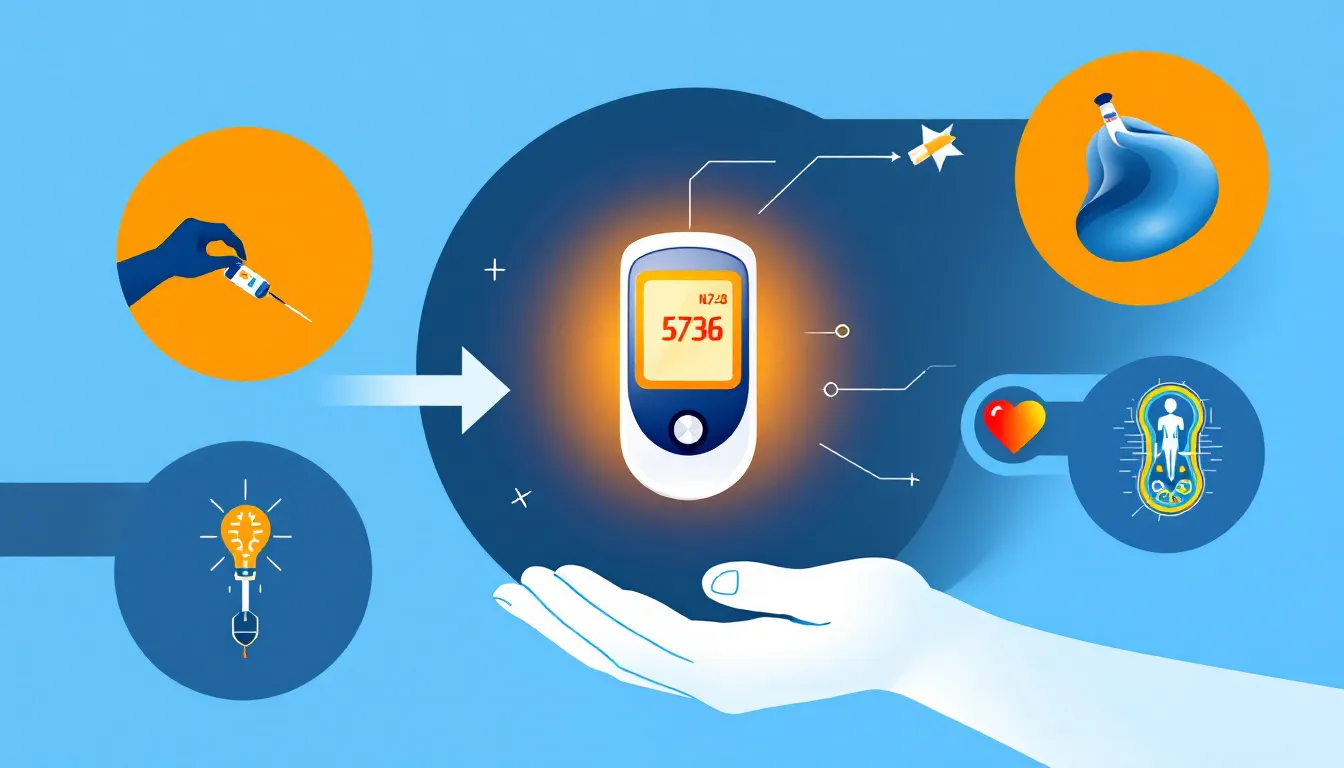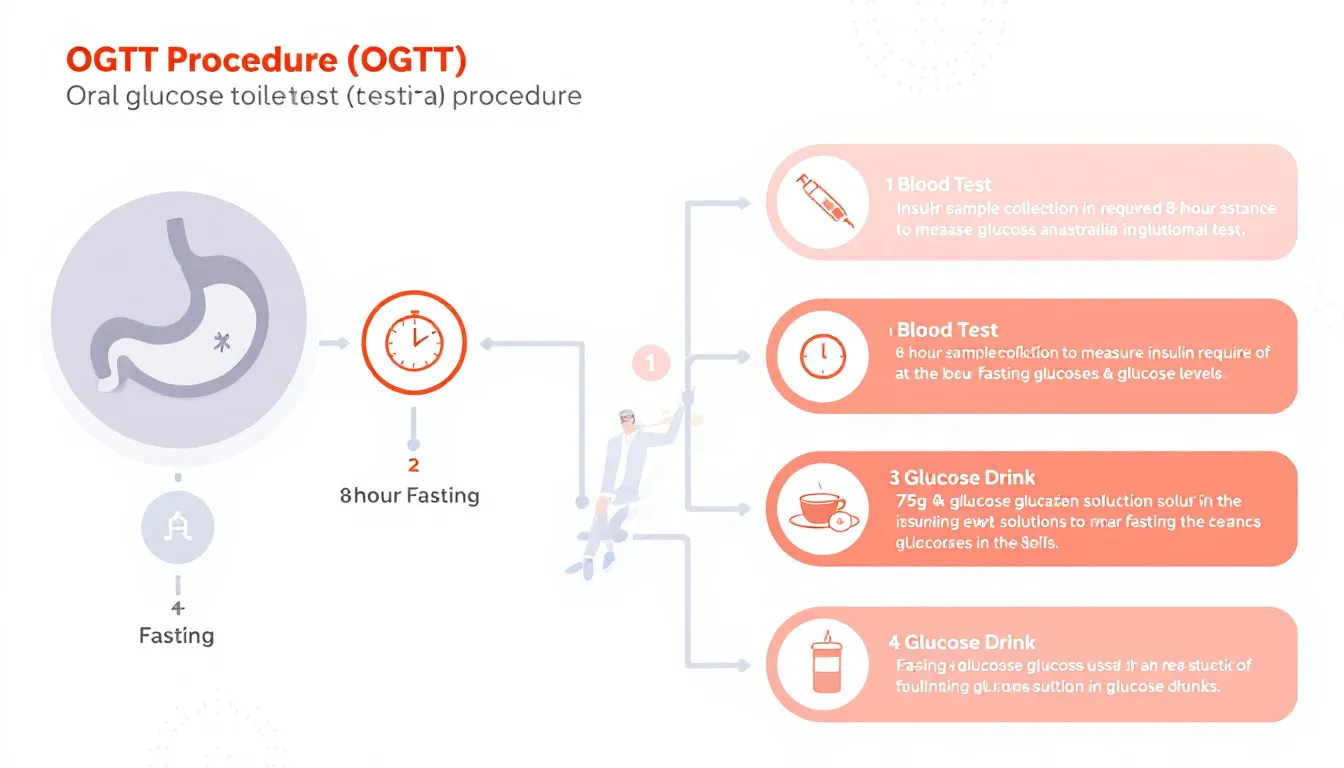If you’re concerned about insulin resistance and looking for an insulin resistance test Australia, you’ve come to the right place. This article provides comprehensive information on the various tests available, how to prepare for them, and what to expect. Understanding the testing process is essential for early detection and effective management of insulin resistance.
Key Takeaways
- Insulin resistance is a critical health condition characterized by the body’s inadequate response to insulin, leading to complications such as type 2 diabetes and cardiovascular disease.
- Early diagnosis of insulin resistance through tests like fasting glucose, fasting insulin, and Oral Glucose Tolerance Test (OGTT) is essential for effective management and prevention of serious health outcomes.
- Lifestyle modifications, including a balanced diet, regular exercise, and the use of Continuous Glucose Monitoring (CGM) technology, are vital strategies for managing insulin resistance and enhancing metabolic health.
Understanding Insulin Resistance

Insulin resistance is a condition where the body’s tissues, particularly in the liver, muscle cells, and fat cells, do not respond adequately to the insulin receptor. This inadequate response leads to reduced glucose absorption, prompting the pancreas to produce more insulin to compensate. As a result, insulin levels in the blood rise, which can further exacerbate the condition and lead to weight gain due to increased fat storage.
Chronic insulin resistance may be a significant precursor to type 2 diabetes, often developing 10 to 15 years before the actual diagnosis. Elevated blood pressure is also commonly associated with insulin resistance, particularly when it exceeds 130/80 mm Hg, contributing to the risk of metabolic syndrome. This syndrome is a cluster of conditions that increase the risk of heart disease, stroke, and diabetes.
Diagnosing insulin resistance early is crucial to prevent severe complications like type 2 diabetes and cardiovascular disease. Fasting insulin and glucose tests help in early detection, facilitating timely intervention and management.
Recognizing insulin resistance as the body’s struggle to manage blood sugar is key. Identifying the signs and undergoing appropriate tests enables proactive steps towards better health, preventing the progression of diabetes and related conditions.
Signs and Symptoms of Insulin Resistance
Early intervention relies on recognizing the signs and symptoms of insulin resistance. Abdominal obesity, indicated by a larger waist circumference, is a common symptom and a marker of metabolic syndrome. Metabolic syndrome includes a condition characterised by high blood pressure and elevated LDL cholesterol, which increase the major risk factor of cardiovascular disease, emphasizing the need for early detection, excess weight, and weight loss.
Other symptoms include high blood pressure and elevated blood glucose levels, which are often detected during routine medical examinations. The body’s sensitivity to insulin decreases, requiring more insulin to manage blood sugar levels effectively. This can lead to high insulin levels, which are a clear indicator of insulin resistance and a precursor to type 2 diabetes.
Untreated insulin resistance can lead to serious health issues like kidney disease and complications related to diabetes. Paying attention to symptoms and undergoing insulin tests allow individuals to manage their health proactively and prevent the progression of insulin resistance.
Testing for Insulin Resistance in Australia

Several reliable methods are available for testing insulin resistance in Australia. Common tests include fasting glucose tests, fasting insulin tests, and the Oral Glucose Tolerance Test (OGTT). These tests offer a comprehensive view of how the body manages blood glucose levels, aiding in accurate diagnosis of insulin resistance.
For accurate OGTT results, patients are advised to maintain a carbohydrate-rich diet for a few days before the test and avoid medications that may interfere with glucose metabolism. Diagnosing insulin resistance is vital because it impacts overall health and can lead to conditions like type 2 diabetes and metabolic syndrome.
In Australia, these tests are widely available and play a critical role in early detection and management. Understanding the various testing options helps individuals make informed health decisions and seek timely medical advice.
The Fasting Glucose Test

The fasting glucose test is a fundamental method for evaluating how well the body manages sugar. This test measures blood sugar levels after an overnight fast, providing insight into the body’s glucose regulation. Elevated both the fasting insulin levels may suggest insulin resistance, indicating a higher risk of developing type 2 diabetes and other metabolic disorders.
To ensure accurate results, it is recommended to fast for 8 to 12 hours before the test, ideally having the test done in the morning. In Australia, fasting insulin and fasting glucose tests are often used together with the OGTT to provide a more comprehensive evaluation of insulin resistance.
Recognizing the importance of the fasting glucose test enables proactive health management. Early identification of insulin resistance allows for lifestyle changes and medical interventions to prevent further complications.
The Oral Glucose Tolerance Test (OGTT)

The Oral Glucose Tolerance Test (OGTT) is a widely recognized and reliable method for diagnosing insulin resistance and diabetes. The test typically involves fasting overnight, followed by consuming a glucose solution, with blood glucose levels measured at intervals afterward. Preparation for the OGTT includes a carbohydrate-rich diet for three days prior and fasting overnight, ensuring no food or drink except water before the test.
Results from the OGTT can categorize individuals into normal glucose tolerance, impaired glucose tolerance, or diabetes based on their two-hour plasma glucose levels. This test is crucial in assessing how well the body manages glucose over time, providing a clear picture of insulin sensitivity and potential metabolic disorders.
In Australia, the OGTT is considered the gold standard for diagnosing diabetes, involving a 75 g glucose load followed by blood glucose measurements. This test is especially recommended when fasting or random blood glucose results fall within uncertain ranges, specifically between 5.5 and 6.9 mmol/L. Undergoing the OGTT provides valuable insights into glucose metabolism, enabling individuals to take necessary steps to manage their health.
Advanced Insulin Resistance Tests
Advanced insulin resistance tests provide a detailed analysis of insulin sensitivity, offering a comprehensive understanding of the condition. One such method is the homoeostasis model assessment (HOMA), which calculates the HOMA-IR score from fasting insulin and glucose results. A score above 2.9 indicates insulin resistance and an increased risk of cardiovascular disease.
Dynamic tests for insulin sensitivity, derived from oral glucose tolerance tests, incorporate both fasting and post-load data for a thorough analysis. Another advanced test is the insulin suppression test (IST), which provides a direct measure of insulin sensitivity by maintaining steady-state glucose and insulin levels during controlled infusions.
Minimal model analysis from frequently sampled intravenous glucose tolerance tests allows for an indirect assessment of insulin sensitivity and the body’s sensitivity through complex mathematical modeling. Together, these advanced tests offer a comprehensive evaluation of insulin sensitivity, which is critical for early intervention and management.
Utilizing these tests offers deeper insights into metabolic health, allowing individuals to manage insulin resistance effectively.
How to Get Tested for Insulin Resistance in Australia
Testing for insulin resistance in Australia is straightforward. Patients usually fast for at least 8 hours to ensure accurate blood sugar readings. They must download and print their pathology form from an online dashboard before visiting a collection center, where blood samples are drawn after fasting.
Consulting a healthcare professional for guidance before, during, and after testing ensures that results are reviewed in the context of other health indicators, including glucose levels and body weight.
Following these steps helps individuals get tested for insulin resistance effectively and take necessary actions based on their results.
Interpreting Your Test Results
Interpreting test results is a critical step in understanding and managing insulin resistance. A normal range fasting blood sugar level should be below 100 mg/dL. Results from the OGTT can help identify prediabetes based on the patient’s fasting glucose results and two-hour blood glucose levels after consuming glucose. The QUICKI index is another method for assessing insulin sensitivity, showing a strong correlation with more direct measures like the glucose clamp.
It is essential to review test results with a healthcare provider for a comprehensive understanding. Considering medical history and other health indicators allows patients to gain detailed information about their condition, which is a key component in taking appropriate actions.
Managing Insulin Resistance

Managing insulin resistance involves a combination of lifestyle changes and medical interventions. Creating a balanced meal plan that includes fresh fruits, whole grains, and a variety of proteins is crucial. Incorporating a variety of vegetables, especially leafy greens, and consuming high-fiber foods like lentils and oats can significantly benefit those managing insulin resistance.
Regular physical activity and regular exercise are also essential in combating insulin resistance and improving overall metabolic health. Continuous Glucose Monitoring (CGM) systems, like FreeStyle Libre, offer real-time insights into glucose levels, allowing for immediate adjustments in diet and activity. CGM technology provides alerts for high and low glucose levels, helping users manage their insulin resistance more effectively.
Adopting these lifestyle changes and utilizing CGM technology helps individuals manage insulin resistance, improve health, and prevent further complications.
Continuous Glucose Monitoring (CGM) for Ongoing Treatment
Continuous Glucose Monitoring (CGM) is a method used to track glucose levels in real time, providing insights into blood sugar fluctuations throughout the day. The convenience of wearing a CGM sensor allows for uninterrupted monitoring, reducing the need for frequent finger pricks. CGM involves a small sensor inserted under the skin, which measures glucose levels in interstitial fluid and sends this information to a monitoring device.
CGM data can be shared with healthcare providers, improving the collaborative management of insulin resistance. This technology provides reports on glucose patterns, helping users identify potential issues and optimize their management strategies. By using CGM for ongoing treatment, individuals can make informed decisions and effectively manage their insulin resistance.
Summary
In summary, understanding and managing insulin resistance is crucial for preventing serious health complications like type 2 diabetes and cardiovascular disease. By recognizing the signs and symptoms, undergoing appropriate tests, and interpreting the results accurately, individuals can take proactive steps towards better health.
Through lifestyle changes, regular exercise, and the use of advanced technologies like Continuous Glucose Monitoring, managing insulin resistance becomes more achievable. Empower yourself with the knowledge and tools necessary to take control of your health and live a healthier, more fulfilling life.
Frequently Asked Questions
What is insulin resistance?
Insulin resistance is a condition characterized by the body’s tissues failing to respond properly to insulin, resulting in decreased glucose absorption and increased insulin levels. This can lead to various metabolic issues if not addressed.
What are the common symptoms of insulin resistance?
Common symptoms of insulin resistance include abdominal obesity, high blood pressure, elevated LDL cholesterol levels, and increased blood glucose levels. These indicators suggest an underlying metabolic issue that requires attention.
What tests are available in Australia for diagnosing insulin resistance?
In Australia, the primary tests for diagnosing insulin resistance are fasting glucose tests, fasting insulin tests, and the Oral Glucose Tolerance Test (OGTT). These assessments help provide a comprehensive understanding of an individual’s insulin sensitivity.
How can I manage insulin resistance effectively?
To manage insulin resistance effectively, focus on adopting a balanced diet and engaging in regular exercise; incorporating Continuous Glucose Monitoring (CGM) can also provide valuable insights. Making these lifestyle changes is crucial for improving your condition.
What is the benefit of Continuous Glucose Monitoring (CGM)?
Continuous Glucose Monitoring (CGM) offers real-time insights into glucose levels, enabling individuals to make immediate adjustments to their diet and activity. This leads to improved management of insulin resistance and better overall health outcomes.
